








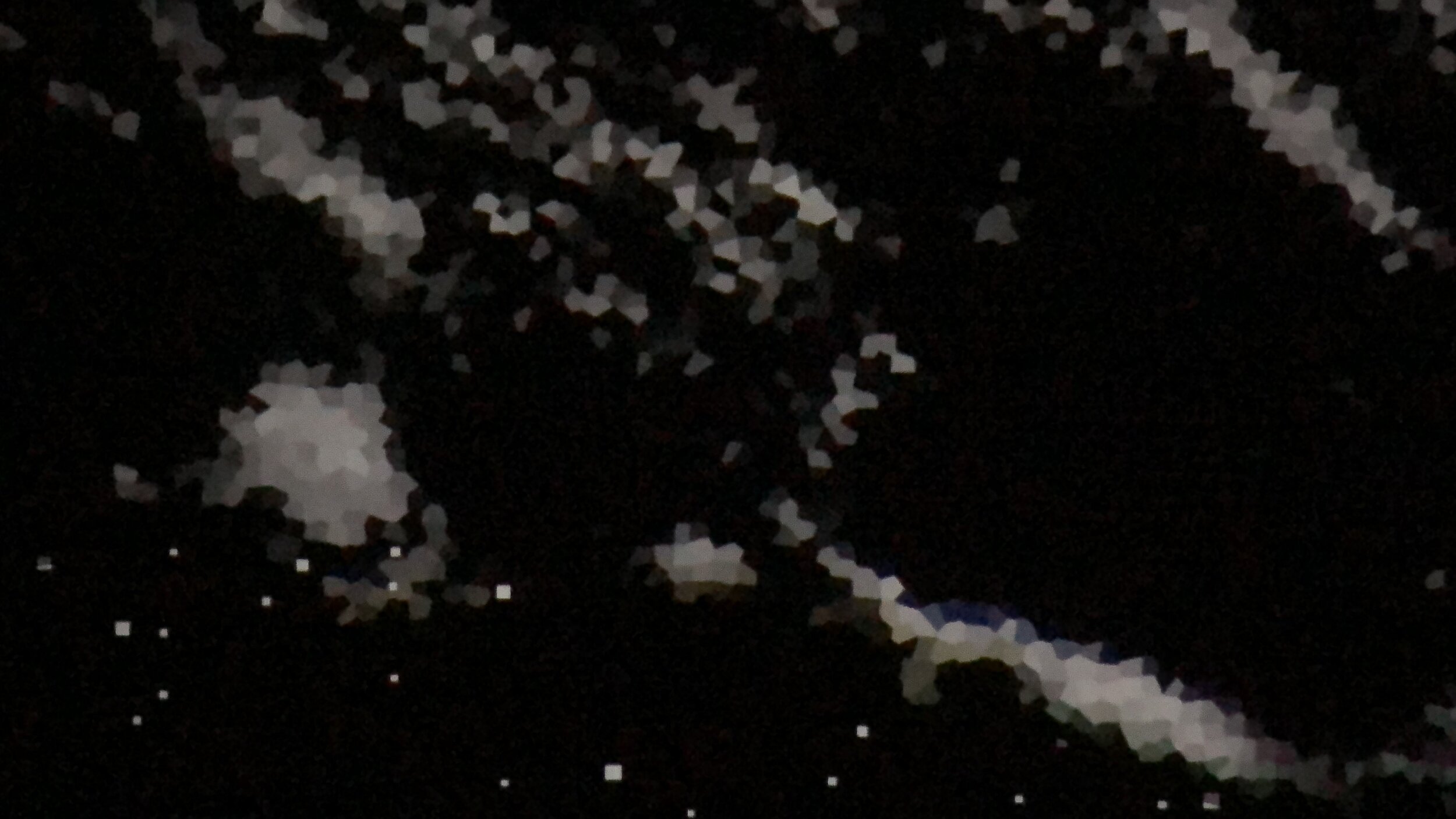





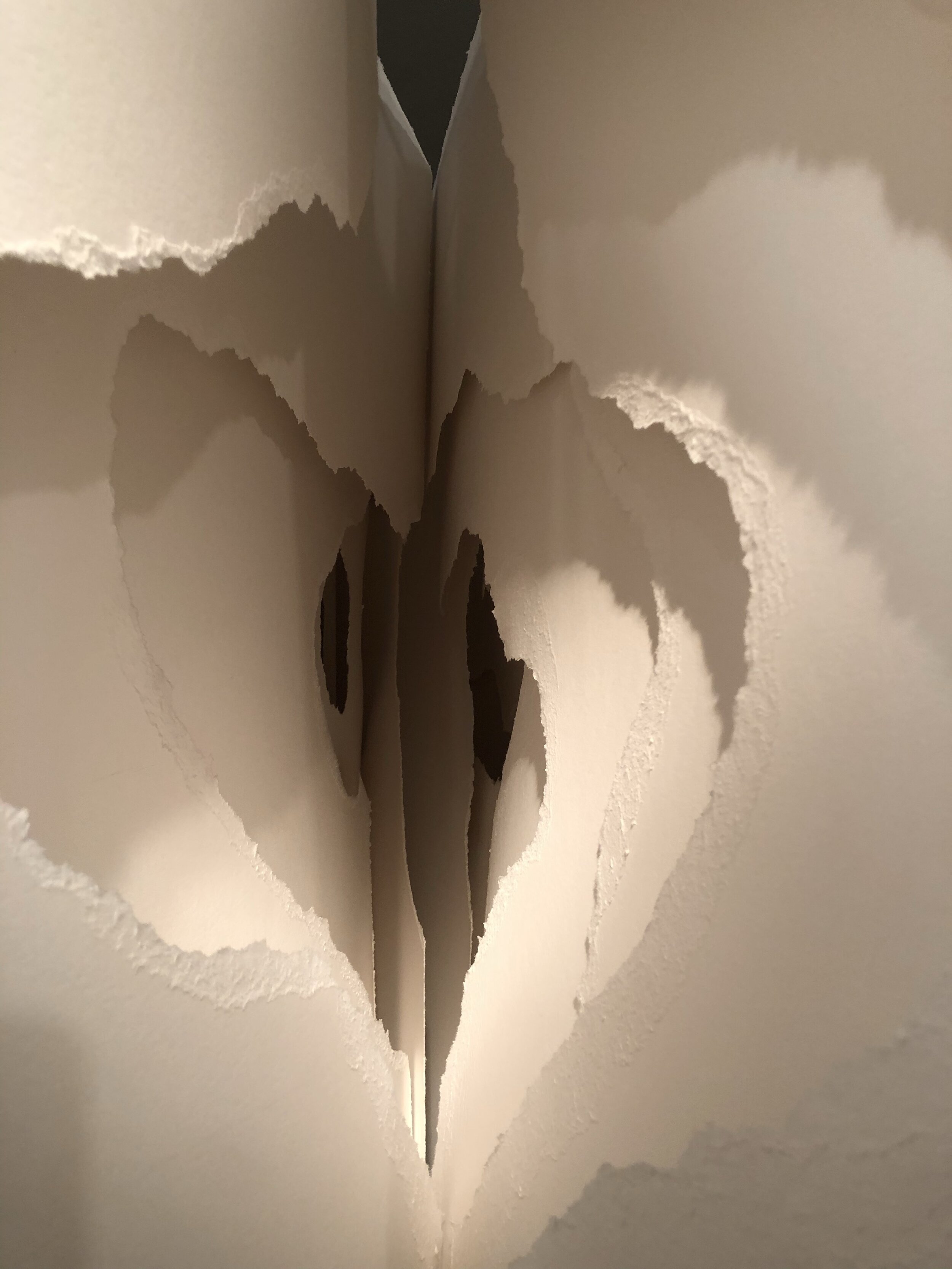











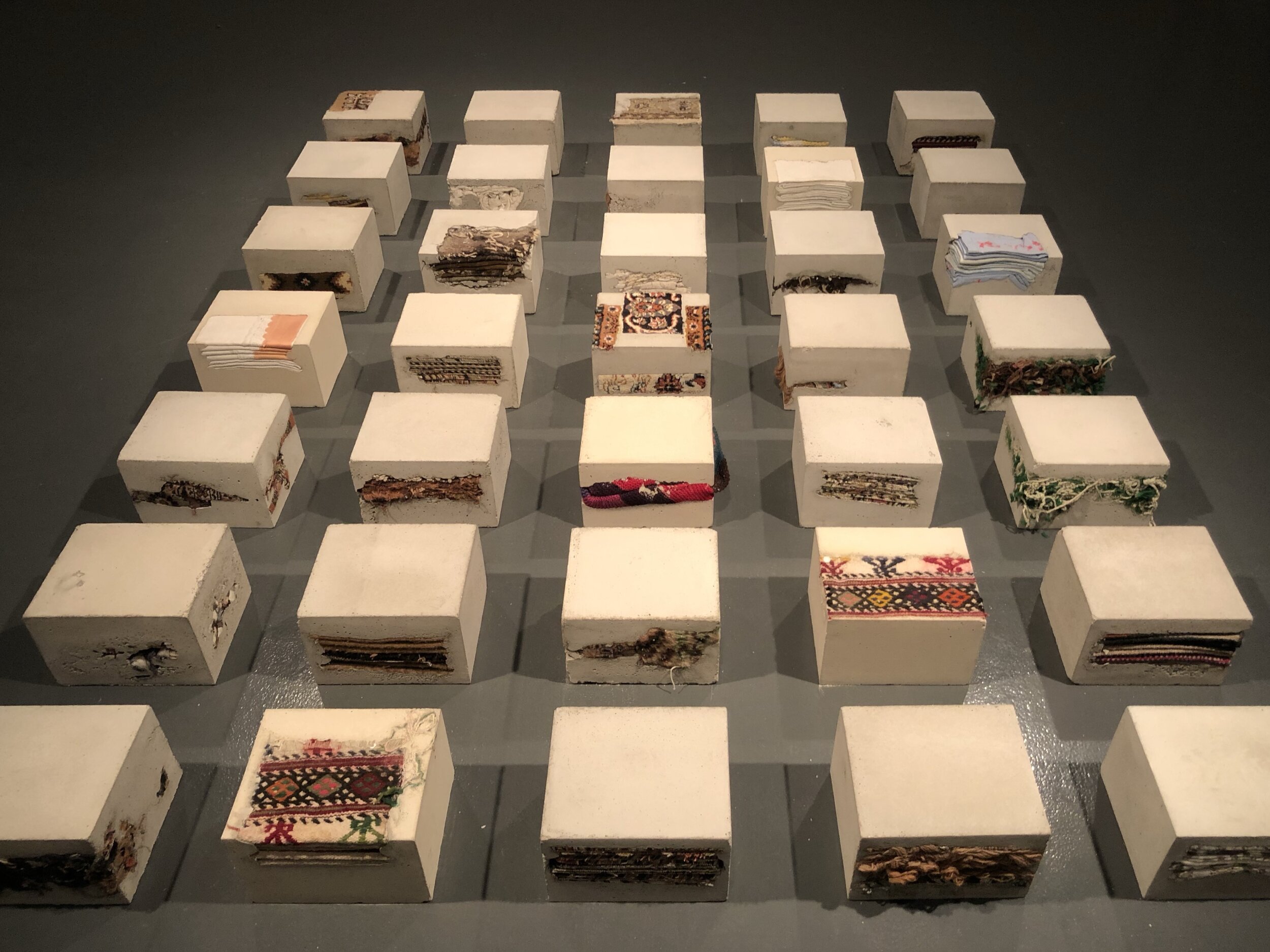


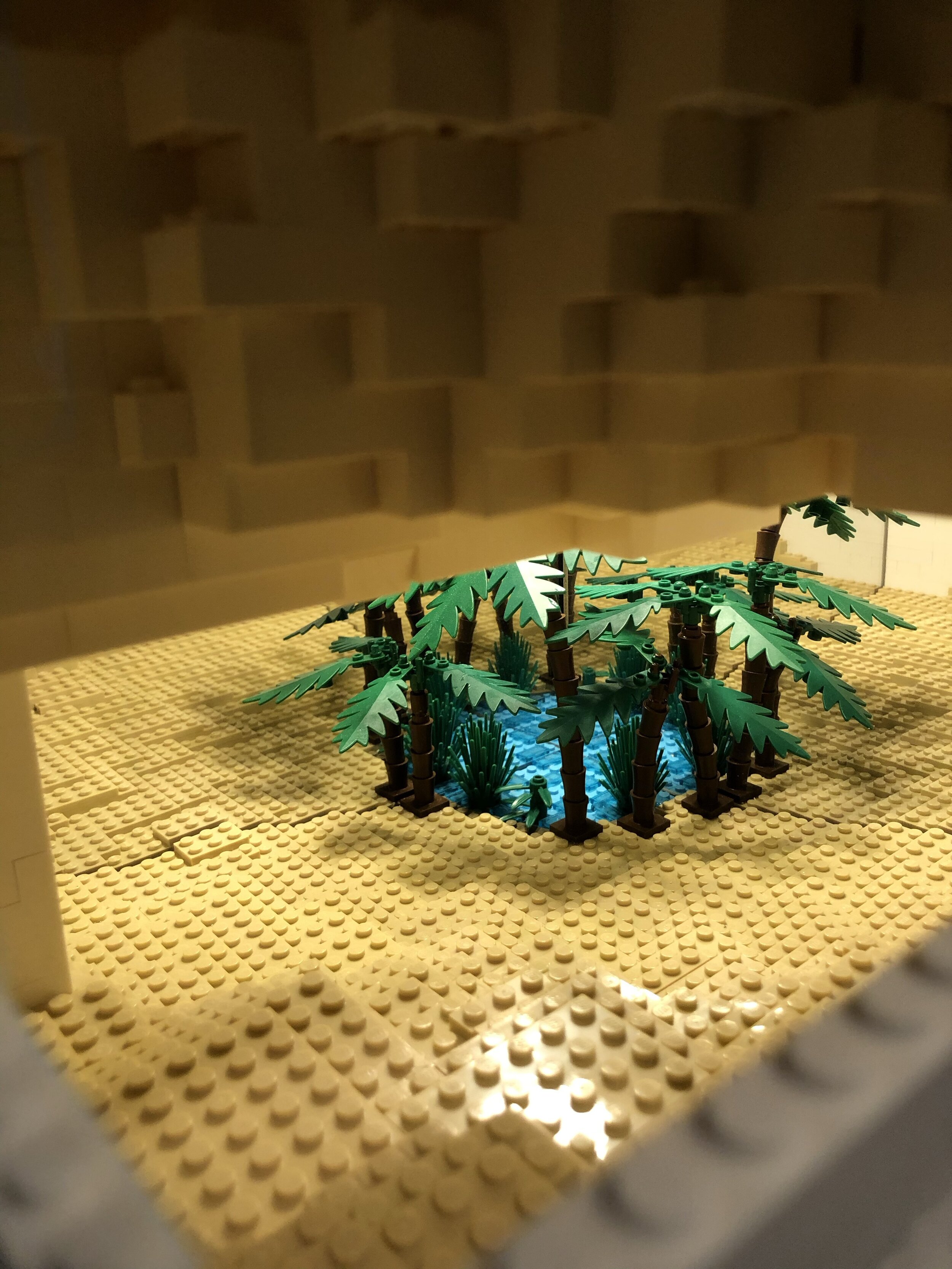






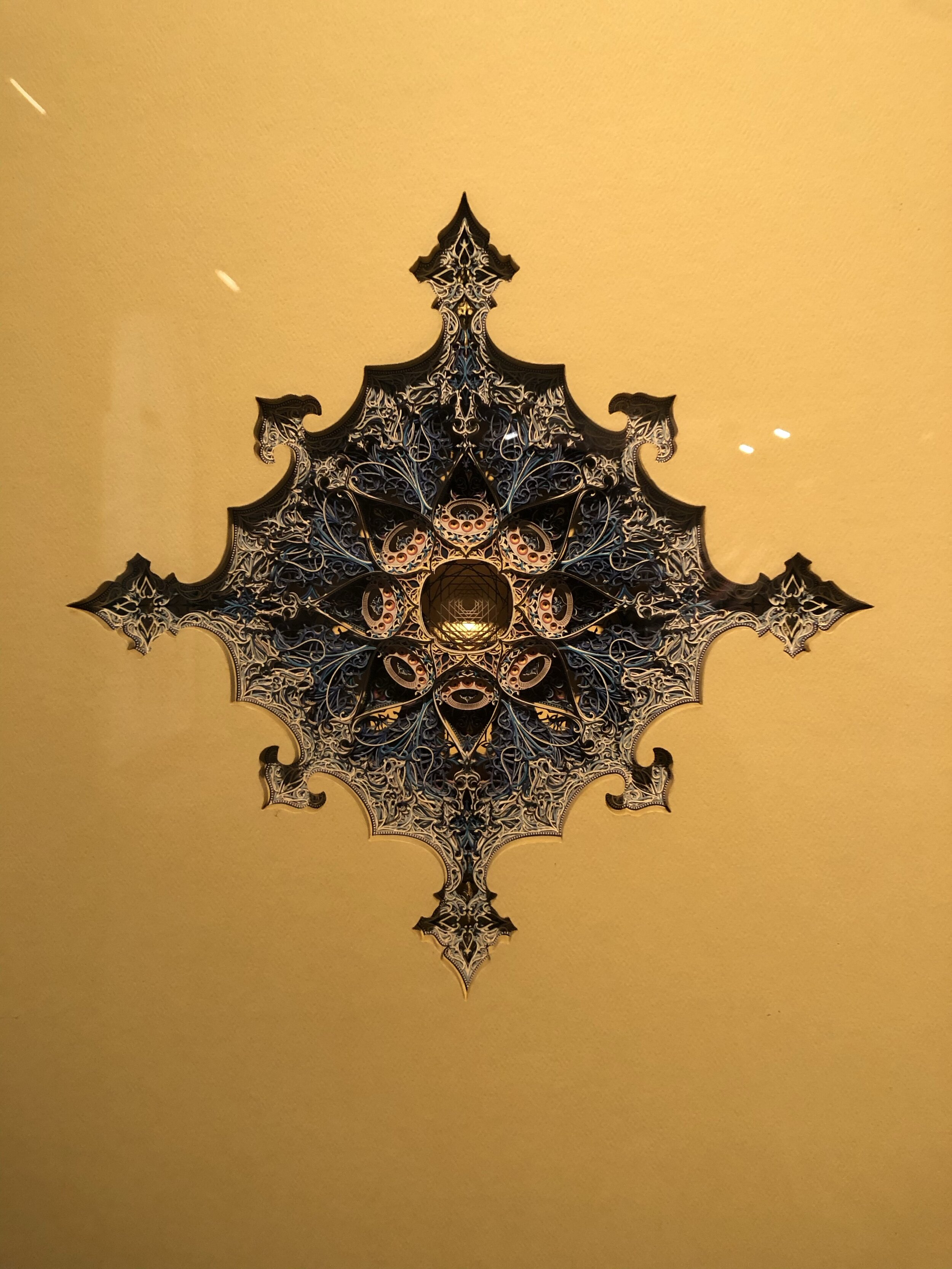





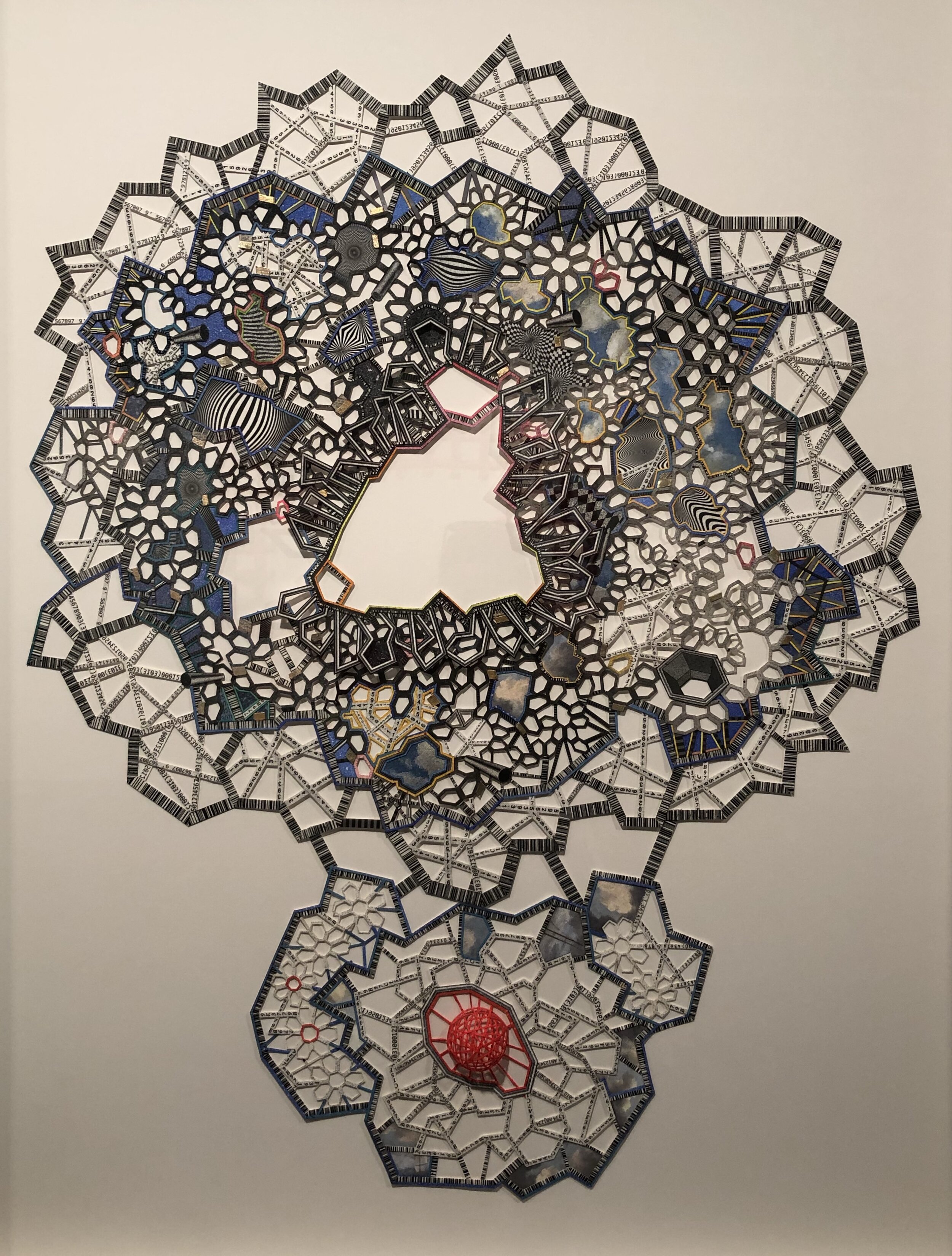
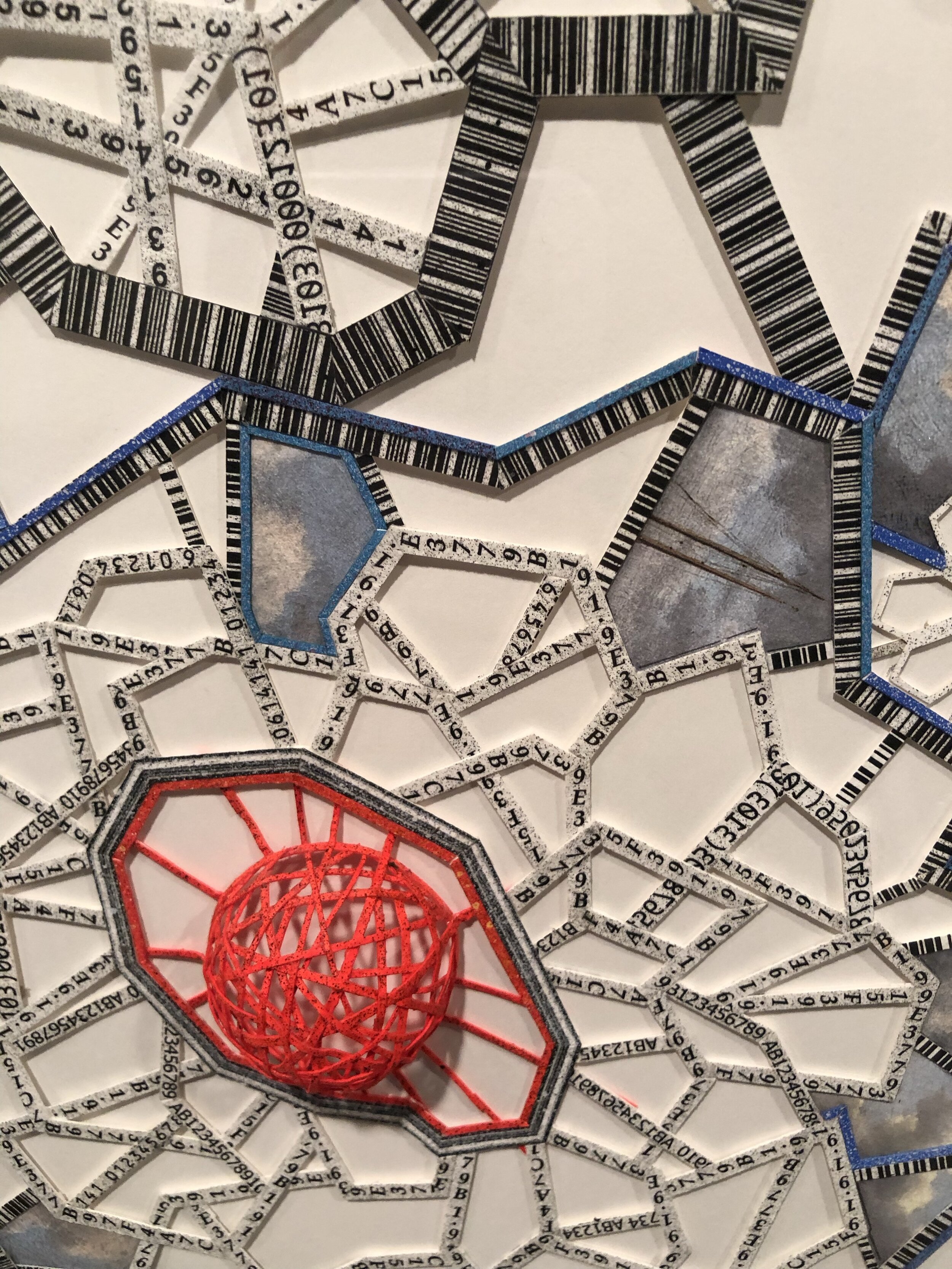





















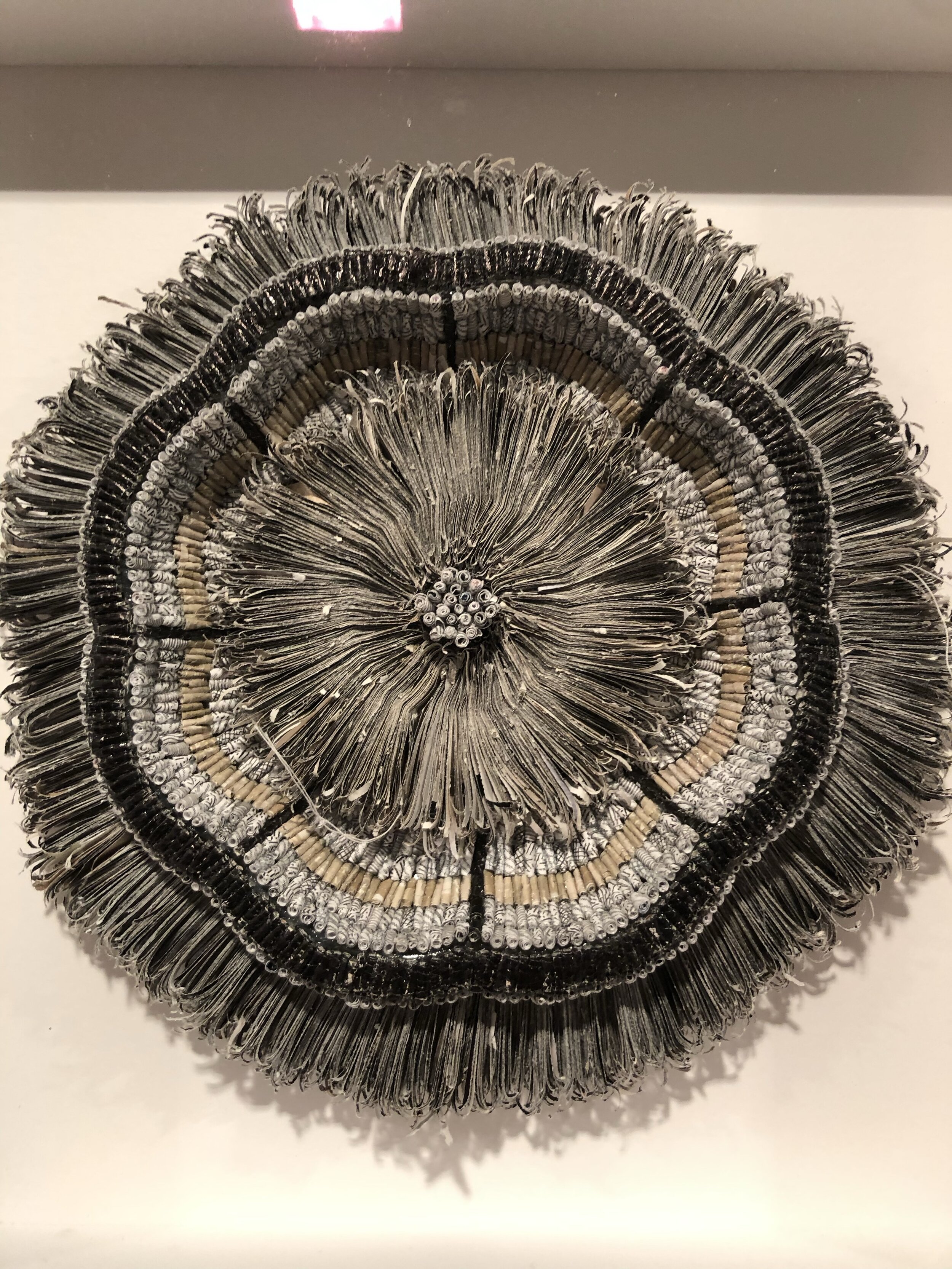




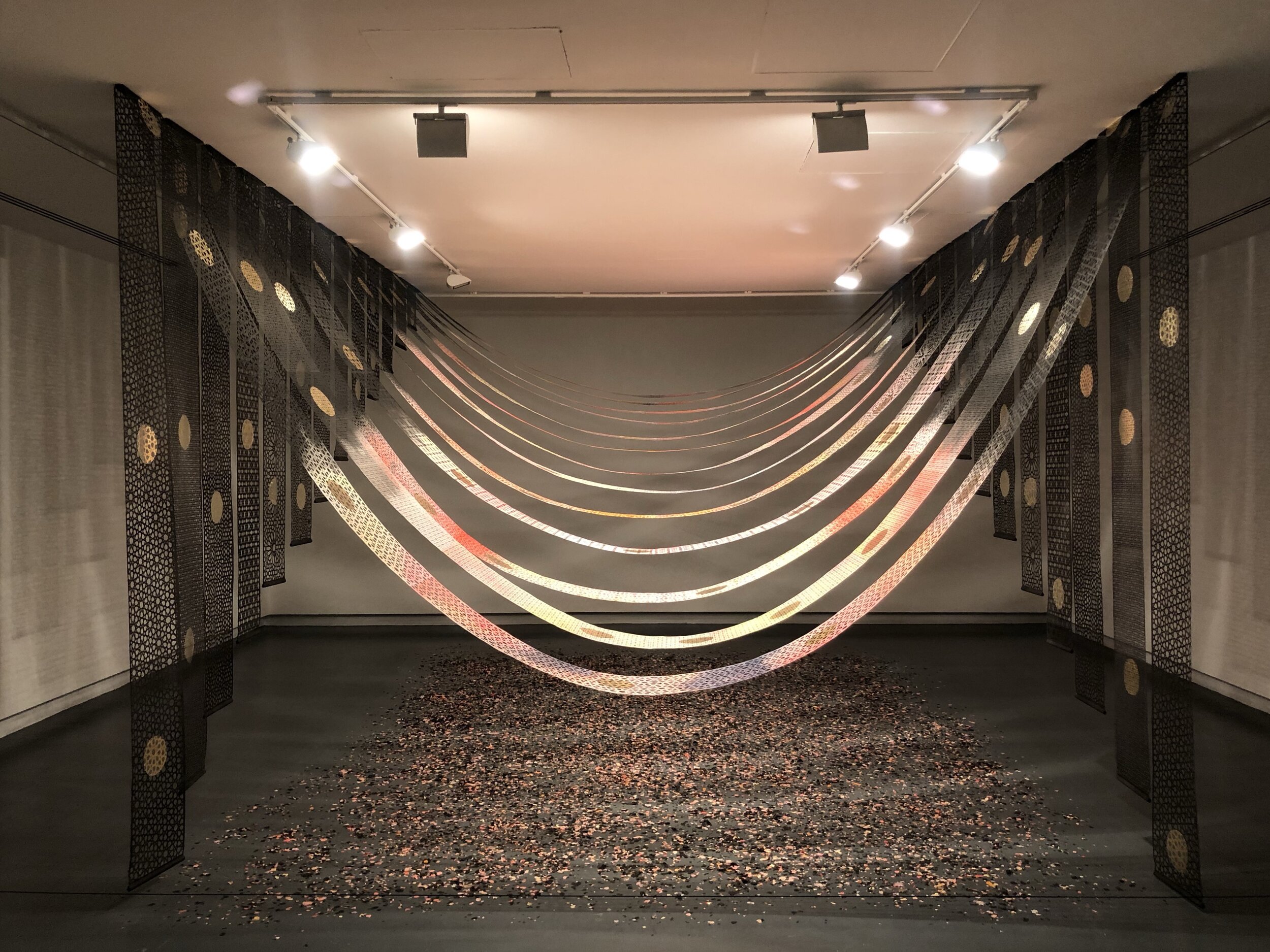





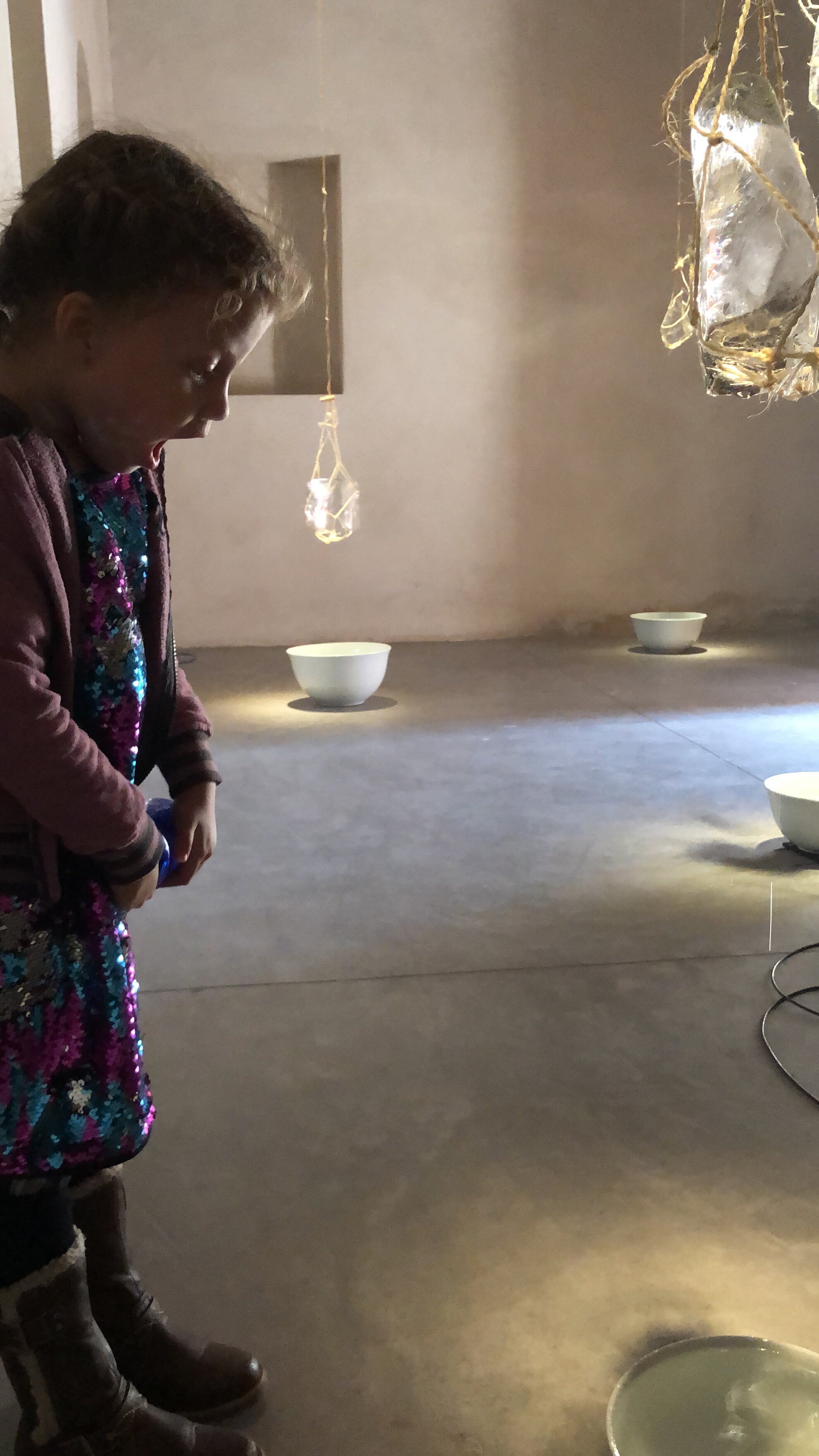
inspiration














































































In our initial meeting on September 17th, I remember saying I felt like I hadn't been very productive. However, in drawing my work together in preparation for a tutorial I realised I had actually produced a relatively good amount of work, I was being proactive but for the enjoyment, which is perhaps why I had dismissed it.




I took the time to revisit my photo collages. When I had created these pages I had always intended to paint the left page to merge the images together. My mental disposition means I get distracted, easily, really easily, and when I do drift off into my thoughts my visual focus tends to blur, meaning the visage in front of me turns into a hazy merging of lines and shapes. When this happens 'Distraction Point Two' creeps in and I veer away from my thoughts and into the patterns. These pages are an attempt to make sense of the visual clutter, the cyclic process of distraction and focus, the redefining of attention. These feel like an interpretation of the visual clutter of daily life, the distraction techniques used to keep us focused inwards.





On the pages above I returned to the process of layering. The aspect of preservation and building up feels indicative of many cities or even countries, especially where I am now. Preserving tradition and cultural ideals while building up and merging into emerging markets, opening doors for layers of society from other locations to lay foundations and develop something new for themselves and the inviting country/city.



Rough sketchbook notes: I had a couple of sit-downs both alone and with a friend and visited the goals and ideas I have in mind for the course.
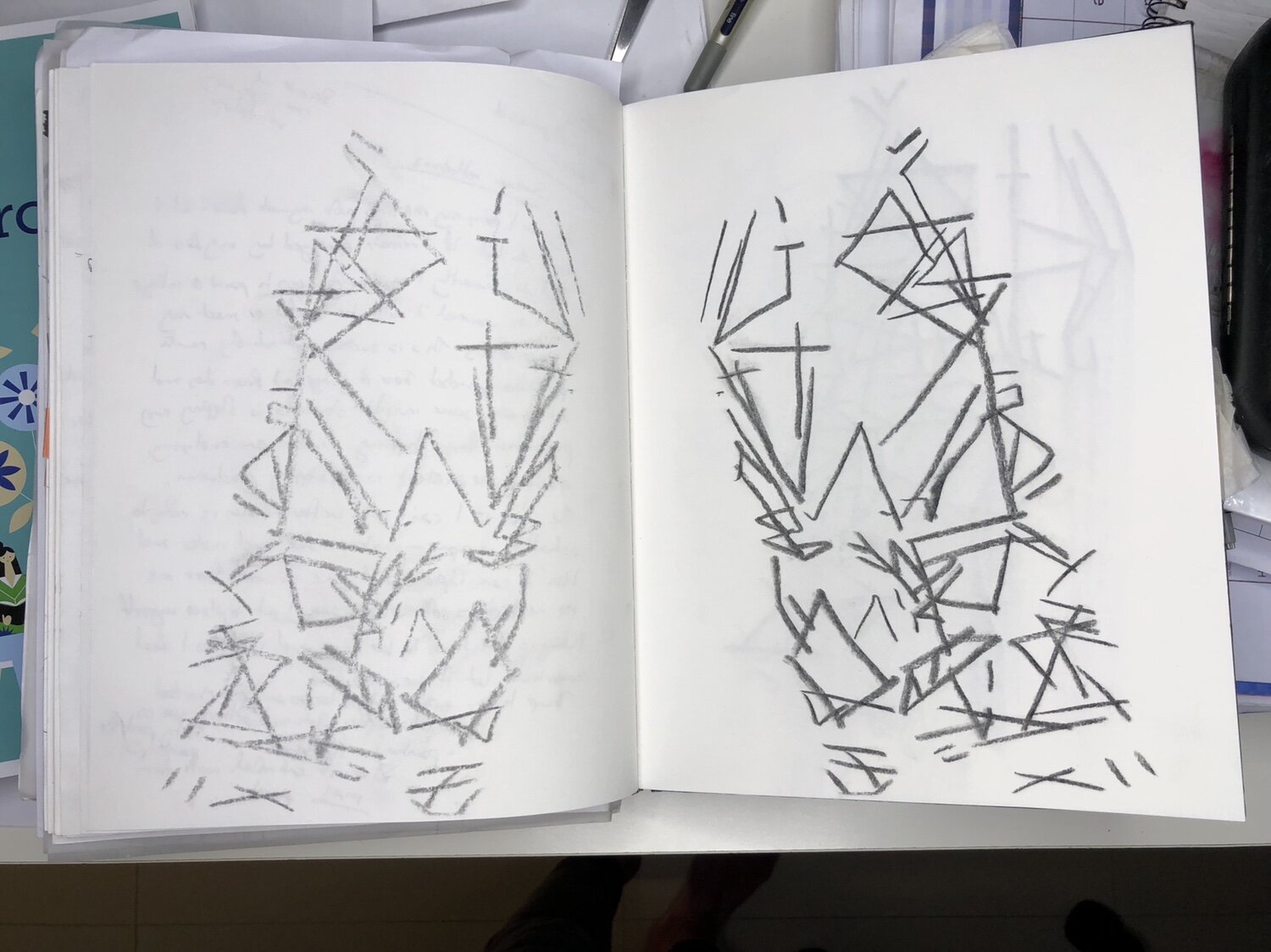


These charcoal pieces were done in a frenzy, a physical manifestation of the speeding anxiety that seared through during the summer. These fragmentations that represented daily routine were metaphorically torn apart in the summer creating angst and instability. I question how I could recreate that instability and anxiety in a gallery setting without endangering the viewer.











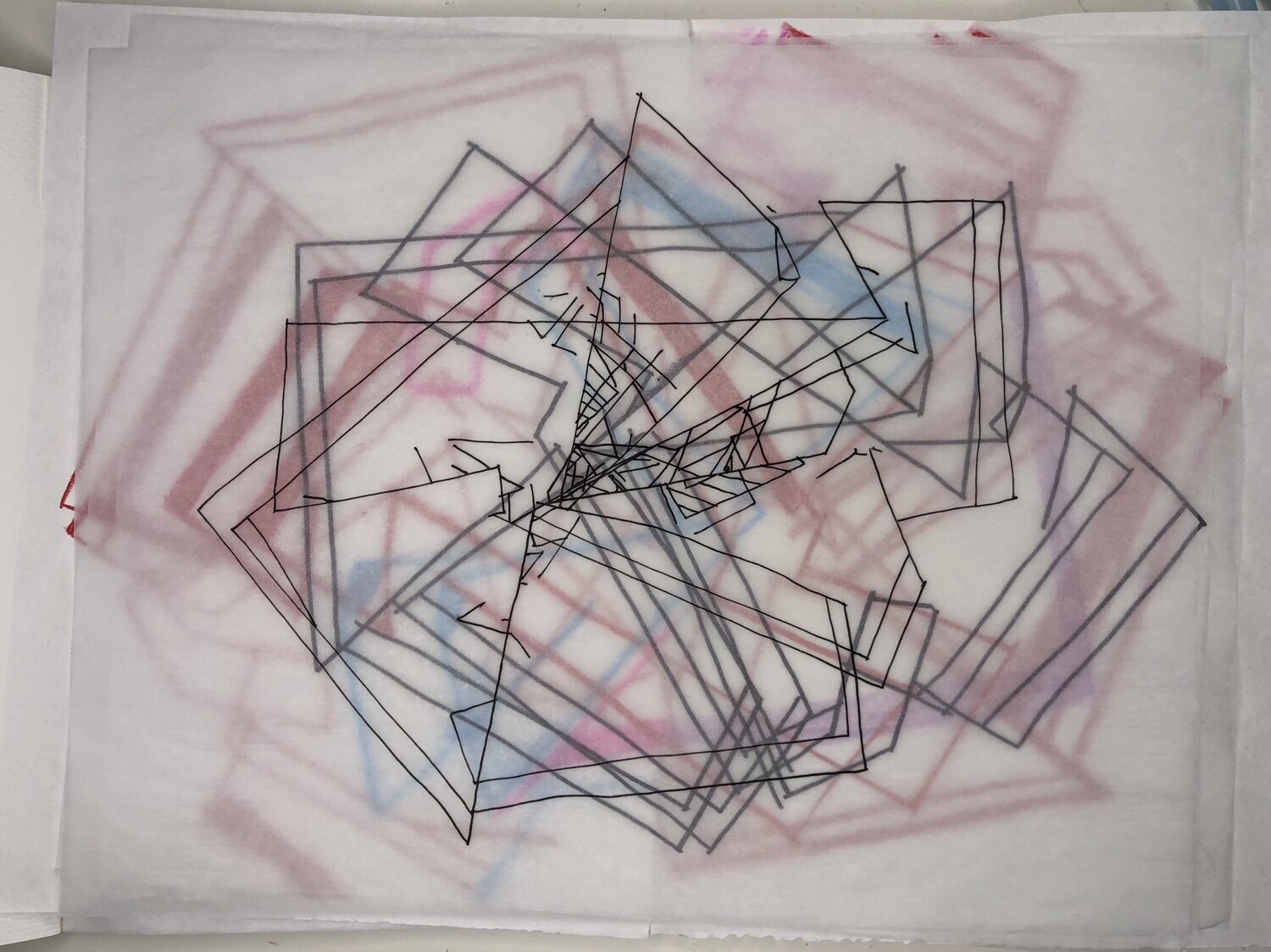



Excitingly these works were created while leading a drawing workshop at my studio space. Evidence of collaboration of materials between myself and my guests. One member bought with her some children's watercolour crayons, they were slick in texture, almost like a lipstick and oddly satisfying to work with. I avoid colour but there was an inner rebellion against myself that urged me to explore them. I don't hate this work. The colour adds another dimension but for the use of colour to continue I need to explore the reasoning further. The psychology of colour is pertinent as I would not want misinterpretations or forced ones either.









Lastly, I am currently working in to collage. I feel like the work needs to become heavier, mirroring the change in daily routine since returning to work. Also looking at the daily routines of many families that become dense with activities, social engagements, errands etc. This process of collage is addictive and therapeutic, I envision many more of these coming into fruition. The papers are photocopies of early sketchbook pages, I would like to explore developing these into paintings, perhaps using modelling paste to build texture, something to squeezing into as we squeeze so much into each day.
Questions:
Is now the time to make work for the sake of it and allow the research I have already done to sink in? Do I keep on researching? Once you've begun researching do you ever actually stop, making that last question void?
I want to maintain the elements of repetition, that is fundamentally important to me, do I need textile techniques to do that? (embroidery)
Do I want to be labelled?...
constructivism - abstract - nonobjective - reductive art - radical art - postminimalism - formalism
Do labels matter? How can I change a label? Who gives work labels?
Reading the book '100 Artists' Manifestos', questioning whether I wish to be associated or inspired by movements/artists whose morality and ethics I question. Can you still appreciate an artwork even if you are fundamentally against the believes and concepts behind the work?
















Edits of summer collections. Visual stimulation for: Line, form, colour, contrast, space, shape.
Artist In Residence programme bought designers Muller and McCaul in to the studio spaces at Tashkeel. Muller, printing specialist, aided Mobius Design studio & Swiss design collective Weltformat in production of their collaborative exhibition WeltformatDXB at Dubai Design District during design week. With the aid of studio assistants she printed all the large format posters for the Dubai section of the show. McCaul was in residence for three months and provided workshops and talks while working in the studio.Fay McCaul:Specialising in knitted and fused textiles using wood, wire and plastics.





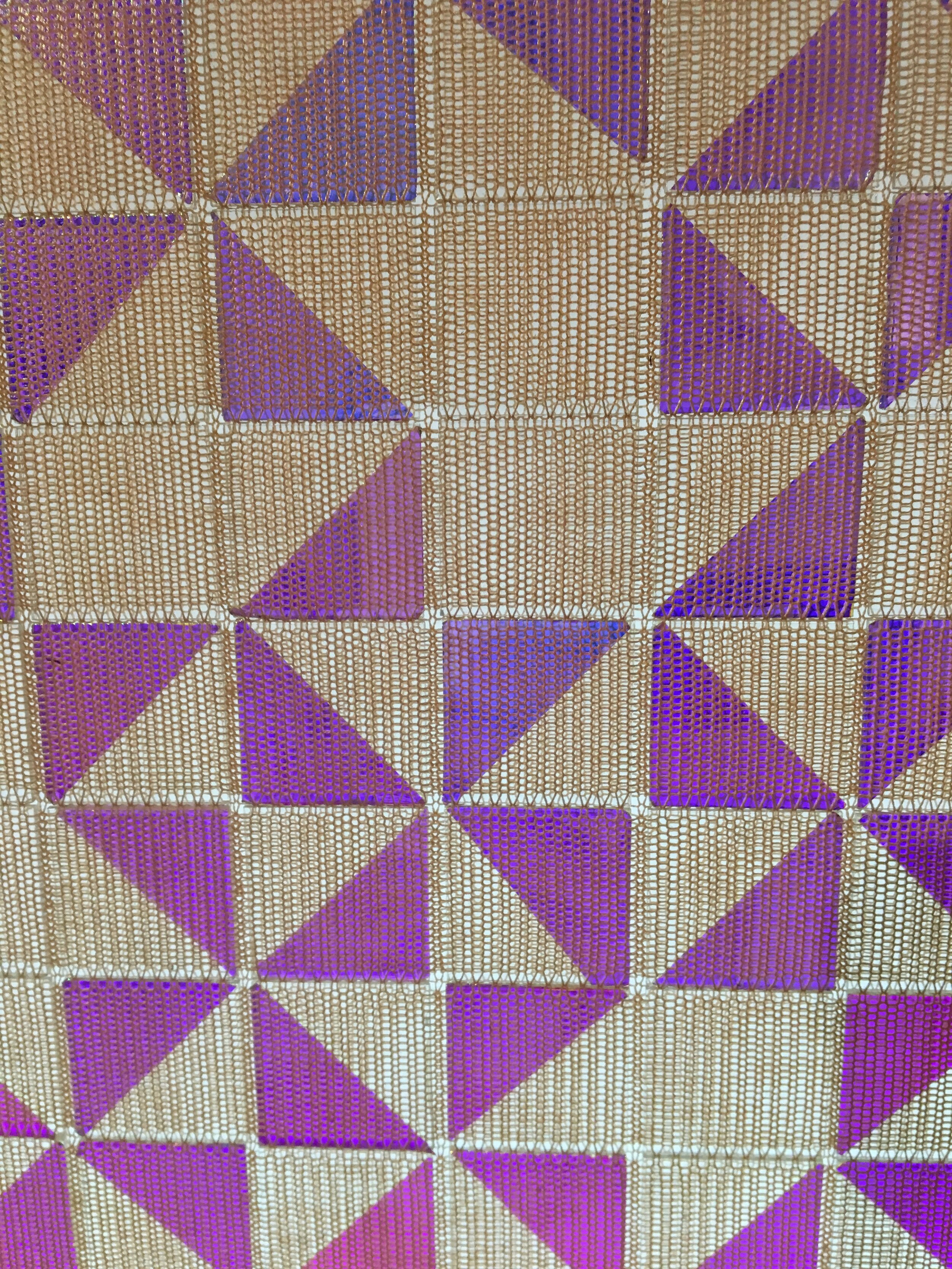
 Most of her work was transparent, luminous or structured in a way to enhance, move or shield light in internal spaces. The repeats were beautiful and called out to be caressed, thankfully something that was not frowned upon in the exhibition.Christine Muller:After the emmense and intense paper printing of Weltformat DXB Muller produced her own works, inspired by the islamic patterns she encountered here in Dubai, on silk flags whose construction was outsourced.
Most of her work was transparent, luminous or structured in a way to enhance, move or shield light in internal spaces. The repeats were beautiful and called out to be caressed, thankfully something that was not frowned upon in the exhibition.Christine Muller:After the emmense and intense paper printing of Weltformat DXB Muller produced her own works, inspired by the islamic patterns she encountered here in Dubai, on silk flags whose construction was outsourced.

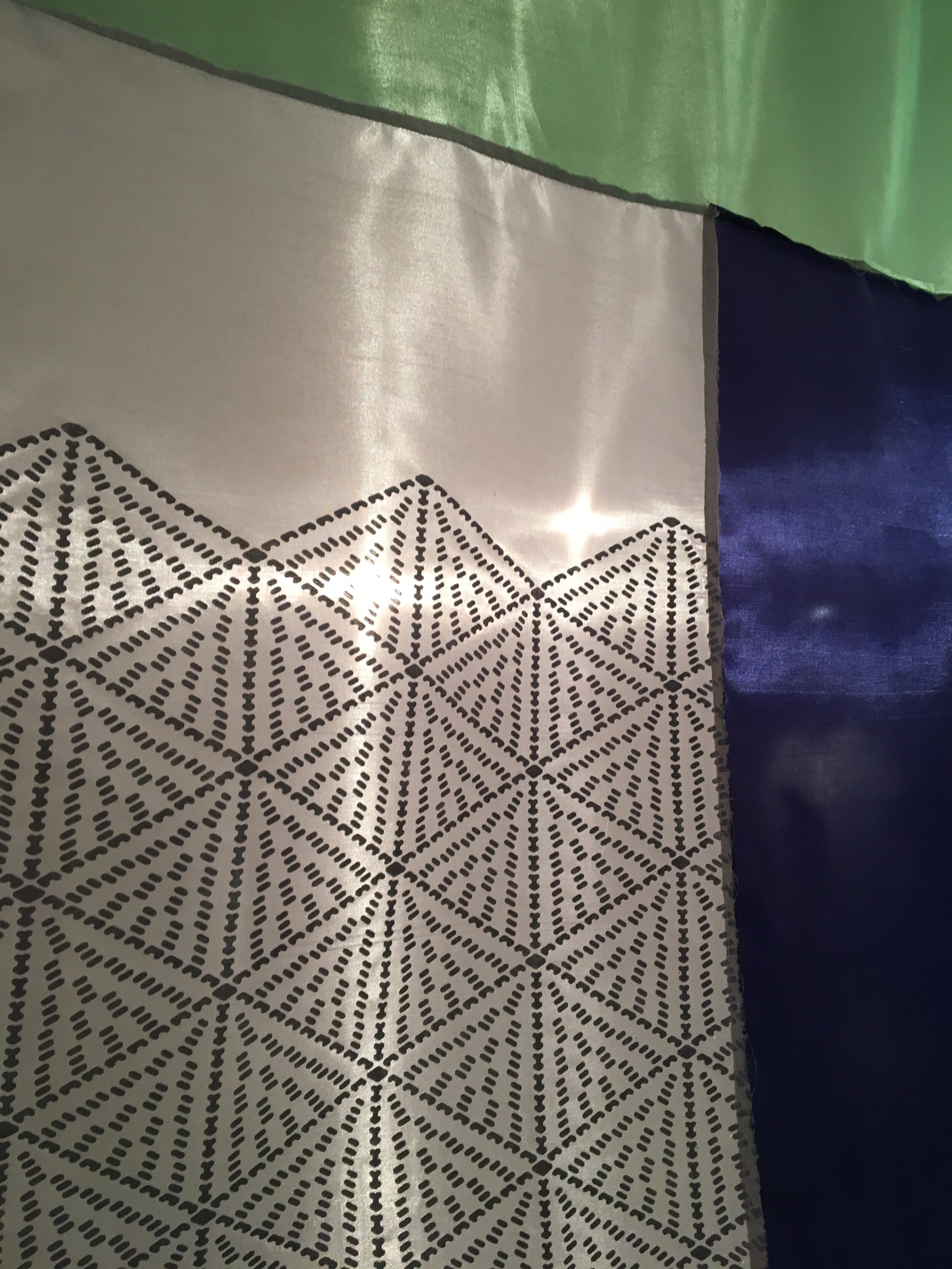
 Most of the pieces had the format of flags local to the Gulf nations, and the use of fine silks gave a luminous subtly to the prints. The audience was encouraged to move through the flags, so that they would float and swirl in the gallery space. The colour palette really felt indicative of the region, the luscious golds, sky blues and rusty sand colours.The exhibition made me question my production or lack thereof. What am I afraid of? What am I trying to stop and why? Why am I restricting my production to small scale pieces? Is it space? of lack of vision?
Most of the pieces had the format of flags local to the Gulf nations, and the use of fine silks gave a luminous subtly to the prints. The audience was encouraged to move through the flags, so that they would float and swirl in the gallery space. The colour palette really felt indicative of the region, the luscious golds, sky blues and rusty sand colours.The exhibition made me question my production or lack thereof. What am I afraid of? What am I trying to stop and why? Why am I restricting my production to small scale pieces? Is it space? of lack of vision?
My Pecha Kucha Presentation:[googleapps domain="docs" dir="presentation/d/e/2PACX-1vQYh_7uhKiDJTb0kQHGvYNcagyjvtWpjPvZblWTM2Z5JnHtAF3YnFl9IGePpDYdwQ7p7QtUAsC-Mtx9/embed" query="start=true&loop=true&delayms=15000" width="960" height="569" /] the pecha kucha - original images and patterns created using photographs taken during the break - an insight to my mind. the swirling and geometric thinking. Below you will find a brief explanation of the activities, the original photographs and the patterns created from them that were included in my presentation.I began with organisation: I colour-coded my bookcase. As you can see, at this point we hadn't mounted our artwork yet either.
 Next on the list of winter break activities was to clean and organise my at home studio space. (it no longer looks like this, but it was nice while the tidiness lasted!
Next on the list of winter break activities was to clean and organise my at home studio space. (it no longer looks like this, but it was nice while the tidiness lasted!
 We had a winter concert at school, it's my daughters first year at nursery so lots of milestones, I know we have lots more winter concerts to come. We both felt the need to dress in the appropriate colours.
We had a winter concert at school, it's my daughters first year at nursery so lots of milestones, I know we have lots more winter concerts to come. We both felt the need to dress in the appropriate colours.
 The day after this Maraya Art Centre in Sharjah had a private view of the Timo Nasseri show, curated by Laura Metzler. Hi work is meticulous and beautiful, a display of patience and time.
The day after this Maraya Art Centre in Sharjah had a private view of the Timo Nasseri show, curated by Laura Metzler. Hi work is meticulous and beautiful, a display of patience and time. The work above is the artists, as is the square crop below, the 'flower' pattern is my patterning of the cropped image.
The work above is the artists, as is the square crop below, the 'flower' pattern is my patterning of the cropped image.
 The exhibition included a room sized installation of mirror pieces laid out in a repeating geometric pattern. I was reflected in the work, the theme that reoccured in the other exhibitions I viewed, it felt poignant to actually see myself in the work I could relate to, finding comfort in the methodological and repeating works.
The exhibition included a room sized installation of mirror pieces laid out in a repeating geometric pattern. I was reflected in the work, the theme that reoccured in the other exhibitions I viewed, it felt poignant to actually see myself in the work I could relate to, finding comfort in the methodological and repeating works.

 On the same day, after a coffee with artist friends and w wander around the souq, I broke off from them and viewed part of the Hassan Sharif Retrospective by the Sharjah Art Foundation in their Bait Al Serkal location. Time was running out to complete the school pick up so it was a short visit. I loved that most of these pieces had sketches accompanying them, showing how they were to be installed in to the spaces... these exact spaces as the artist had planned a show before his death.
On the same day, after a coffee with artist friends and w wander around the souq, I broke off from them and viewed part of the Hassan Sharif Retrospective by the Sharjah Art Foundation in their Bait Al Serkal location. Time was running out to complete the school pick up so it was a short visit. I loved that most of these pieces had sketches accompanying them, showing how they were to be installed in to the spaces... these exact spaces as the artist had planned a show before his death.
 I managed another trip to Sharjah the following week, which is unheard of for me, Sharjah has notorious traffic. The day was gloriously gloomy and moody, it rained while I was there and I absolutely loved it. On average we get around 3 days of rain a year, although that seems to be growing with the cloud seeding taking place, but thats another story. Hassan Sharifs Retrospective is monumental, taking on 6 gallery spaces in Sharjah Art Foundation as well as the Bait Al Serkal space. The pattern I created from the crop of one of Sharif's pieces is incredible, I plan to make this. My husband is an expert in knots and my fibre/weaving background should make this accomplishable.
I managed another trip to Sharjah the following week, which is unheard of for me, Sharjah has notorious traffic. The day was gloriously gloomy and moody, it rained while I was there and I absolutely loved it. On average we get around 3 days of rain a year, although that seems to be growing with the cloud seeding taking place, but thats another story. Hassan Sharifs Retrospective is monumental, taking on 6 gallery spaces in Sharjah Art Foundation as well as the Bait Al Serkal space. The pattern I created from the crop of one of Sharif's pieces is incredible, I plan to make this. My husband is an expert in knots and my fibre/weaving background should make this accomplishable.
 From the Hassan Sharif Retrospective I moved on to Sharjah Art Museum to view the Sharjah Islamic Arts Festival, a lot of the artists were on site so it was nice to meet them and have a chat.
From the Hassan Sharif Retrospective I moved on to Sharjah Art Museum to view the Sharjah Islamic Arts Festival, a lot of the artists were on site so it was nice to meet them and have a chat.
 I spoke at length to the lovely Natalie Fisher (Artweave Originals) about her half cross stitch pieces, the labour intensive nature of textile art, and the hours that were displayed on the walls.
I spoke at length to the lovely Natalie Fisher (Artweave Originals) about her half cross stitch pieces, the labour intensive nature of textile art, and the hours that were displayed on the walls.
 While catching up with a friend for lunch it rained, for a moment it felt like a european climate. I actually had an excuse to wear my boots and a hat!
While catching up with a friend for lunch it rained, for a moment it felt like a european climate. I actually had an excuse to wear my boots and a hat!
 We went back to sunshine the next day. The new neighbour we now live in has a totally different colour to the built up marina, it much warmer and less grey. There seems to be more tonal contrasts with the sky, but a lot more harmony between the dwellings. This is my neighbours house taken from the steps to my front door.
We went back to sunshine the next day. The new neighbour we now live in has a totally different colour to the built up marina, it much warmer and less grey. There seems to be more tonal contrasts with the sky, but a lot more harmony between the dwellings. This is my neighbours house taken from the steps to my front door.
 The chilly nights mean that we have an excuse to use the fire pit, my husband knows my love of pattern and found one with these hole punched sides.
The chilly nights mean that we have an excuse to use the fire pit, my husband knows my love of pattern and found one with these hole punched sides.
 On christmas eve we made an exciting trip to the snow... indoor as Ski Dubai. Father Christmas/Santa (depending on your preference) was in residence. This year they had made a gorgeous winter wonderland with so many lights and christmas trees. It was a little overwhelming... and slippery which is how this image came to be!
On christmas eve we made an exciting trip to the snow... indoor as Ski Dubai. Father Christmas/Santa (depending on your preference) was in residence. This year they had made a gorgeous winter wonderland with so many lights and christmas trees. It was a little overwhelming... and slippery which is how this image came to be!
 We had a quiet christmas of just the 3 of us at home. This was the first year that our 3yr old really understood the concept of christmas, the stories, the presents etc. It was lovely to see her excitement when she realised Santa had been.
We had a quiet christmas of just the 3 of us at home. This was the first year that our 3yr old really understood the concept of christmas, the stories, the presents etc. It was lovely to see her excitement when she realised Santa had been.
 As soon as Christmas was over I set to work in the back yard and painted our boundary wall. We live on a 4 villa compound and have an L-shaped property that neatly slots on to the back of the bigger houses. The space is great (compared to the tiny balconies we are used to) but it was very 'beige' due to the looming houses we look on to.
As soon as Christmas was over I set to work in the back yard and painted our boundary wall. We live on a 4 villa compound and have an L-shaped property that neatly slots on to the back of the bigger houses. The space is great (compared to the tiny balconies we are used to) but it was very 'beige' due to the looming houses we look on to.
 After finishing the wall on New Year's Eve, we celebrated with the neighbours, watching the light show from Burj Khalifa out the front and then making a made dash to our roof to watch the fireworks of Burj Al Arab.
After finishing the wall on New Year's Eve, we celebrated with the neighbours, watching the light show from Burj Khalifa out the front and then making a made dash to our roof to watch the fireworks of Burj Al Arab.
 School runs began almost immediately as my daughter wanted to be a part of the winter camp they provided. Winter mornings here have beautiful cloud formations to collect.
School runs began almost immediately as my daughter wanted to be a part of the winter camp they provided. Winter mornings here have beautiful cloud formations to collect.
 Later on in the break I chose unleash my inner Flâneuse (for a great article about that here), I took to my neighbourhood on foot to room the sandy thoroughfares between the villas and streets.
Later on in the break I chose unleash my inner Flâneuse (for a great article about that here), I took to my neighbourhood on foot to room the sandy thoroughfares between the villas and streets.
 Unfortunately the winter break came to an end with some slightly uncomfortable changes to our home life, I'm sure ti will end up being a mere 'blip' in the grand scheme of things. I chose to deal with it how I always to, making patterns and binding books. My sketchbook has been getting overburdened by scraps of paper and photocopies so I began to collate and bind to find some calm in the storm.
Unfortunately the winter break came to an end with some slightly uncomfortable changes to our home life, I'm sure ti will end up being a mere 'blip' in the grand scheme of things. I chose to deal with it how I always to, making patterns and binding books. My sketchbook has been getting overburdened by scraps of paper and photocopies so I began to collate and bind to find some calm in the storm.




Taking in a new, low rise environment, without the shine of the towers I'm used to.
[gallery ids="2638,2632,2640,2637,2633,2630,2629,2628,2622,2624,2641,2642,2631,2623,2626" type="columns"]
Finding new geometries, patterns, or creating from the lack thereof.
An international line up of artistsQuestion whether its decorative arts or fine arts and does it matter? Are they raising questions regarding political, or social views or creating art for arts sake and pushing the boundaries of technique and artist descriptions?Below are some of the pieces that really stood out for me at the exhibition. I was pressed for time and but was fortunate enough to speak to a couple of the artist that were in the space.
Above is an image of Sara Ouhaddou's ceramic tiles, the spaces had a variation of these in different coloured glazes. These unglazed installation stood out for me, the lack of colour focused the viewer on to the patterns and the fragmentation, which I am always drawn to in artwork. It felt like a jigsaw I was itching to put together, I am actually tempted to print this image out and reorganise it to find a repeat as I don't think there is one, so it alludes to a broken pattern but actually one doesn't exist.

This piece blew my mind. I had seen it on social media, photos from friends etc and of course been to his solo show at Maraya Art Centre a few days before. I did not realise that the piece was actually concave! It recesses in to the wall 80cm meaning that for installation a false wall has to be installed to hold the piece and bring the illusion to life. Due to the nature of the material it is almost impossible to photograph an capture the recess.
Alhashemi is a local designer, it's always wonderful to see local artist and designers being included in diverse international shows. The material is familiar if you are living in the UAE as its a common building material that is often discarded in piles around construction sites, it was intriguing to see it in a familiar placement but have it exposed by its reflection as a islamic pattern design. distorting our perception of what we assume we are seeing.

This piece, In Bloom, created excited shadows and light casts around the space. The byproducts of the artwork were more inspiring that the form itself to me as a viewer. I wanted to trace them, and capture their forms on the surrounding blank walls.




The wooden textiles pictured above were both beautiful to look at and frustrating to be around as I desired to play with them, folding the forms and experiment with the shapes and formations they promised to create. I also took the opportunity of the secluded exhibition space to move around the back of the pieces and experience the light shining through the textiles. It occurred to me that this is definitely an important factor to me, something I also use in my own work so need to make this more of a feature or thinking point.

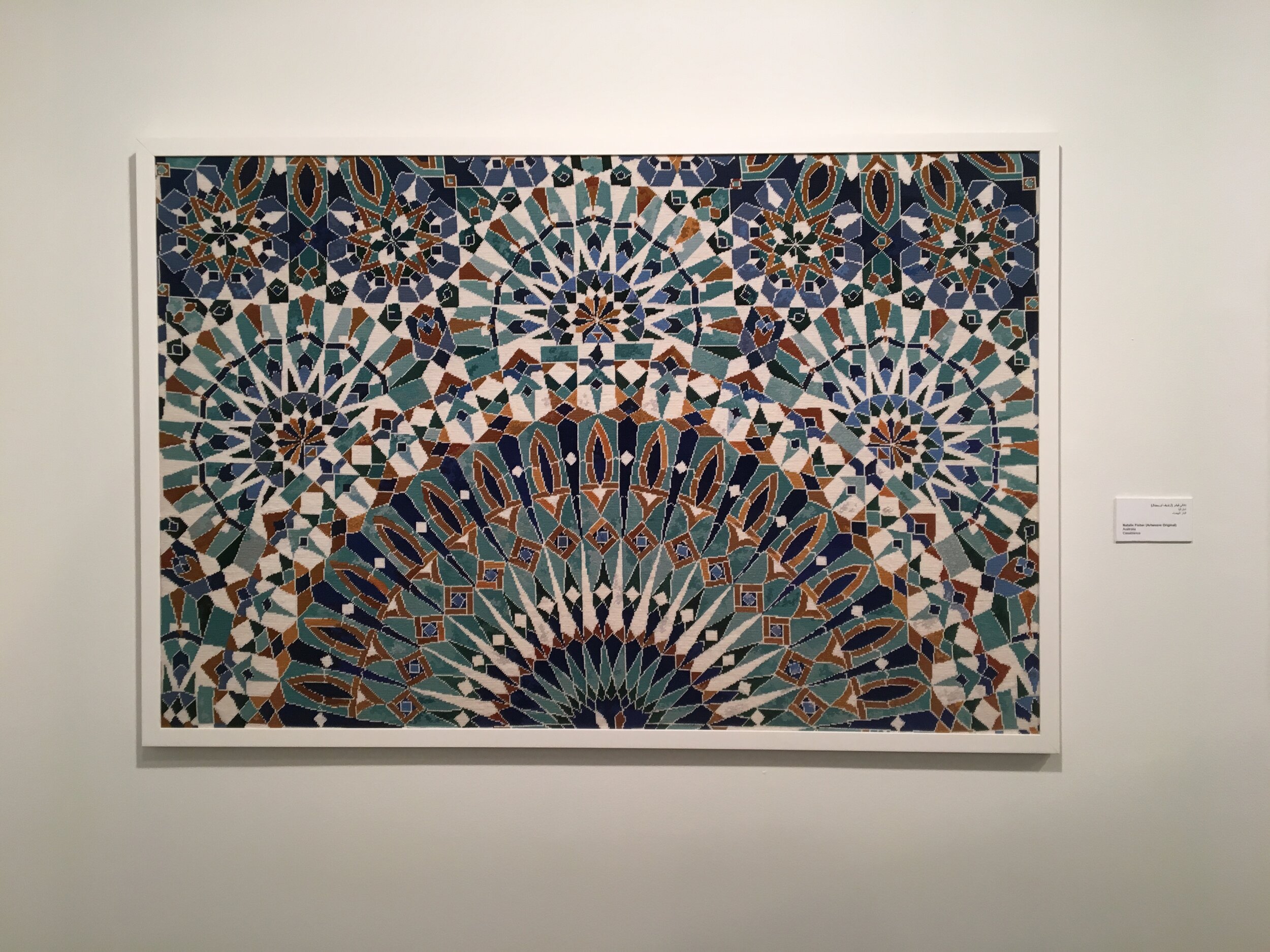

Natalie Fisher was jumping on to one of her pieces as I turned in to her exhibition space, it was a geometric design made from needlepoint floor cushions, her camera was set up on a tripod with the timer ticking down. We chatted for ages, she was an absolute delight. We discussed process, time and the fact that 10yrs+ of work was hanging on the wall due to the labour intensive nature of embroidery and needlepoint, and how the art scene worked in the UAE. It was her first visit to the region so I gave her some tips on what to see. The half cross-stitch works were expansive, intricate and absorbing, you could capture the mediative aspect of creating simply by viewing the work. I ask the question of my work, and how I can be as dense in practice as these needlepoint pieces but remain transparent?


Ulian's installation again bought up the question of transparency, intricacy and sensuality. I wanted to 'ping' the taut wires, brush the diodes with my fingers but at the same time protect its delicacy. Literally fusing technology with ancient geometrics.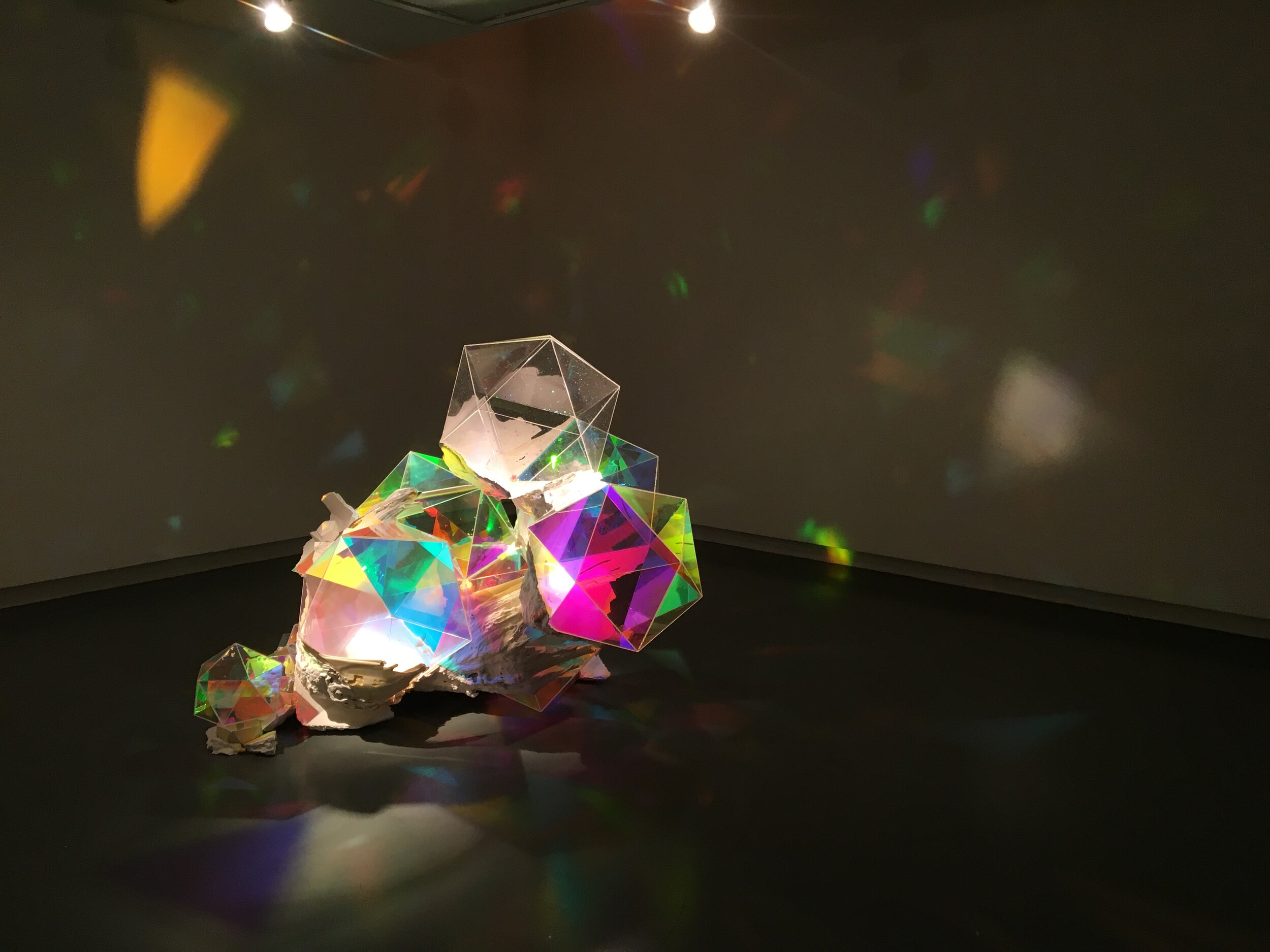
I've seen John Foster's work before; I've been lusting after a furniture piece he created, a table that emerges from these iridescent forms. The allude to the capturing of bubbles, that moment of sparkling wonder until 'pop' it disappears, only with Foster's works they remain in their luminescent glory.

Johnson's work was spell binding, the accuracy and technical craftsmanship in these paintings is a sight to behold. I initially thought, as most audience members do, that they were enlarge photographs of architectural facades, but no, they are photorealistic paintings completed by Johnson. I'm not sure on as to what they bring to the table, copying craftsmanship on to canvas, other than to show of Johnson's technical ability. Perhaps the viewer should be questioning the original crafts people, the ones who created the tile formations, the patterns that Johnson so loving recreates?

What Shlian can do with paper is a feat of engineering, again I was familiar with his works before encountering them in the gallery space, they are beautiful, especially Ara 150, a geometric grid structure created from cut paper. By creating these geometries in 3D paper sculptures Shlian changes the way light interacts with the patterns and moves the patterns in to tangible spaces from their usual flat perspectives.
Pattens: layered, cut, fragmented and hung, to be experienced from different angles as you move through the space. Traditional Persian rugs with the atypical floral motifs sliced through with the harsh, clinical geometries from islamic architectural features. It would not be unusual for these two features to be in the same place but not so inter-related as this. Is the rug still functional as a rug after being cut? Does it now have another function? window dressing? screen/divider, art piece?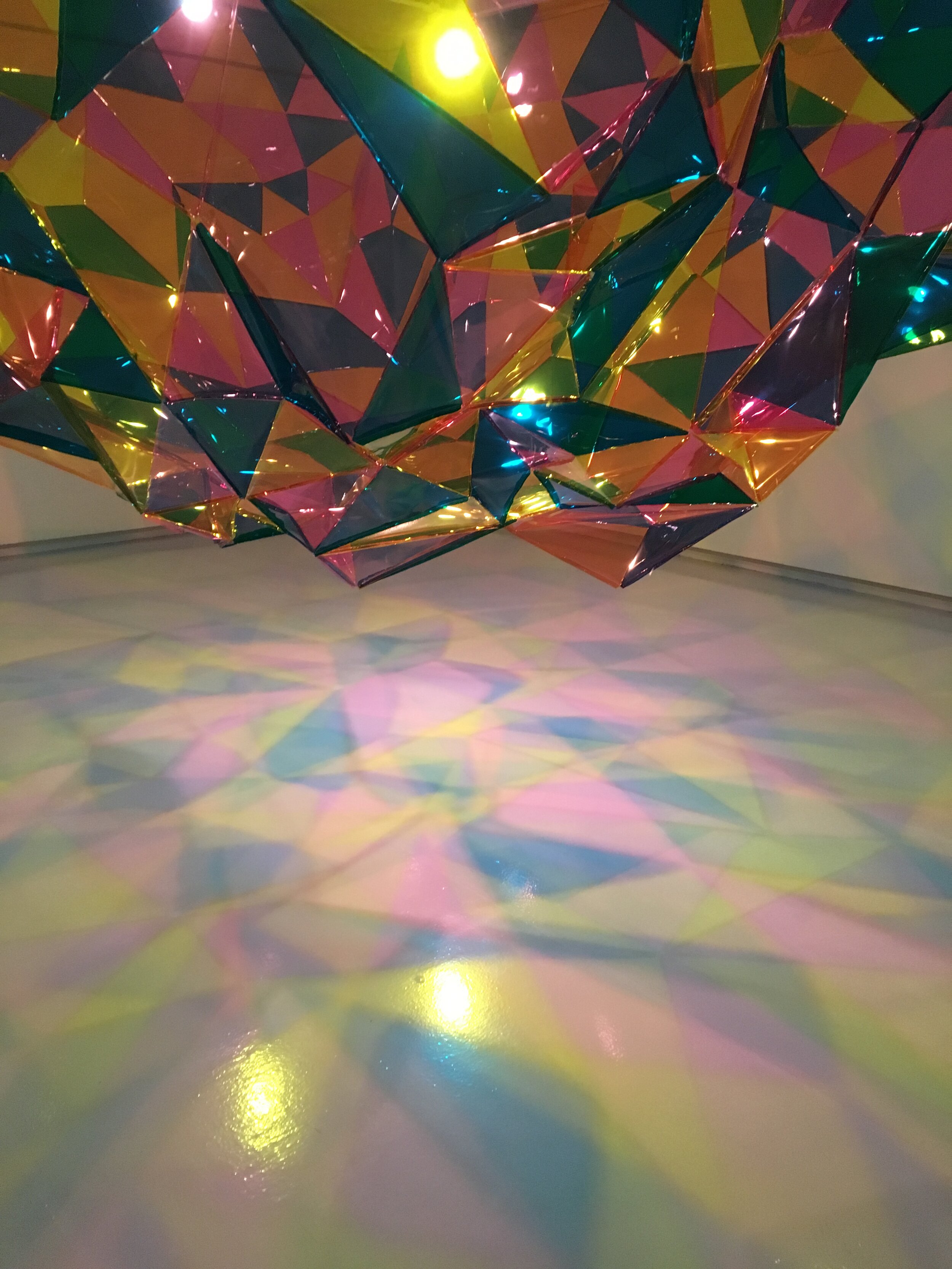
Gabby O'Connor is an artist/researcher, working with scientists in the Antarctic. Why she was included in the Islamic Art Festival I do not know. Thats not to say her work wasn't beautiful or captivating to it's audience but the simple use of geometric shapes, in my opinion, dos not preclude automatic inclusion, this troubled me. I am grateful that she was included as I think her research in the Antarctic is fascinating and her light pieces are very inspiring to me as someone obsessed with pattern and transparency.
Kuriyama is inspired by infinity.. and apparently the arabesque patterns in the domes of mosques, however I find no other record of this islamic connection in any writing on his work or the artists own website. Does that mean it was manipulated for inclusion? Does that matter? I'm not sure how the artists were selected for the exhibition, whether it was open call or invite but I do question what artists working with Islamic inspired art pieces were overlooked.
http://sharjahart.org/sharjah-art-foundation/exhibitions/hassan-sharif-a-retrospectiveDue to time constraints I revisited Sharjah to complete my visit to the Hassan Sharif exhibition at Sharjah Art Foundation. Al Mureijah Square is a collection of buildings that have been renovated and specifically built as exhibition spaces. The retrospective is divided and the viewer is guided through the spaces in a specific order, the gaze is controlled, ordered.Gallery 6 - Hassan's Atelier- an uncomfortable space, it felt like an intrusion to be inside without his express permission. It is clearly staged, presented in the way it was set up in his home but clearly out of context. (Links to the Brian O'Doherty Text 'Studio & Cube', must finish reading.) My question was why? Why did they feel the need to place a representation of his working space inside the gallery, did it provide validation? Proving that he was, in fact, an artist? It questions whether we need to see or know of an artists process to validate the work, is the research more important or the time taken to create? The time taken to consume the art is also variable and does or should the time things are created in impact the time it is consumed in? Can you dictate how long people take to consume the work?



Email (2009) stuck me due to the contrast of the print plates, displayed as works in themselves, and the black prints in the perspex display box. The texture and colour variations of the copper, creating depth and mood; the sterile nature of the prints, somewhat reminiscent of the virtual mail they are named after. Perhaps harking back to the time of hand written letters, the mood and personable aspects of mail penned, sorted and delivered by hand.Gallery 5 - I'm an object maker

Installations of repetitive artefacts bound, collated, ordered and arranged.I felt like they were maps of time, labour was intrinsic in the materials that are used and the process of construction. Sharif utilises the everyday object and subverts it in to art, reclaiming or perhaps simply claiming, the mundane in to the fine art.


Jute (2016), this mass of knots drew me in to it. It feels intense, like time captured in a format. The repetition of knotting and binding, and also the visuality of space taken alongside the time.In terms inspiration this work moves me to a place of making, I want to bind and tie, to build a geometry from fibres that are not conducive to rigidity and linear forms. I want to physically create the sensual layers that ask to be touched and allow for movement in the sense that persons move around the city in the cyclic elements of routine. To embody the routine in a bound sensual way, to experience the touch of routine in the way that routine seems to touch us in the ethereal sense.Gallery 4 - Performance is goodThis gallery has images of performance, photographs, scripts and texts, so you are struck by the monumentality of the paper and yarn/string structure that hangs in the corner: Dictionary (2015). Pages from Arabic/English dictionary, taken and bound. So much of Sharif work involves binding together, in a messy, overwhelm, engulfing the spaces and the forms that originate.




Then I stepped around the quiet gallery, to be confronted by a wall of framed subtle pieces that depict lines, drawn or scratched from mail opened: The Mail (1983). The pieces are so reminiscent of the fractures I create in my sketchbooks, I try to photograph them but my reflection in the work hinders my collecting, metaphorically implanting myself in the work that I have just jumped in to. The repetition of the routine activity, opening letters, that create marks from the tools that are used to complete the task.
Finally as I round the end of the exhibition in this gallery space I encounter photographs of London taken by Sharif, as a pieces, documenting activity. The date is my 1st birthday, I would have been a short drive away from this spot, across London. The images (Trees-Walham Grow Road-London, 1983) are familiar as I have similar ones in the albums at my parents house, they are unframed, composition is not addressed, they are taken as record not as art or for display, simply to record and account of a happening. They are filled with nostalgia for me personally, of childhood and times past in a location that is familiar but no longer has that familiarity.Gallery 3 - I'm loyal to colour





Upon entering the gallery aptly named 'loyal to colour' you are confronted with masses of accumulated goods, curated in to large mass sculptural forms filling the spaces. Interesting that the colours evident in the pieces are actually quite restricted, whether this is a conscious decision made by the artist I'm not sure, but the effect is quite affronting. Perhaps it is simply a reflection on the limited dyes available for plastic manufacturing in the region - but it remarkably creates a unified presentation of apparently single work pieces.Gallery 2 - My little tiny boxThe smallest of the galleries, filled with what felt like trinket works, experiments that perhaps never expanded in to larger pieces or due to the ethics of the artist were held back in to single works.

The knots and materials, binding books, physically containing the information, the way words bind narratives in to archives.


The books are all closed, containing the contents, if there is any, from the viewer, alluding to the journals of teenagers, or secret files of governments.Gallery 1 - ...so I created a semi systemThe last gallery felt like the most overwhelming. Monochrome works filling the walls, they look like the inner workings of an designers brain, pages from a sketchbook. Repetitive designs for geometries that were pushed through in to motifs created in to wooden structures or, my personal favourite, woven in to rugs


The shear volume of work was impressive and a visual reference to the dedication Sharif put in to amassing his work.






The translation from fragmented forms in to clean woven rugs. The technical construction done by commissioned parties, some of the linear aspects of the geometries are lost to the fluidity of the fibres.The scale of this retrospective is intense, Sharif is a 'Local Legend' and it feels right to have this exhibition here in Sharjah, I do wonder how far his reach will go though, I hope he won't be lost to the larger names in the global art scene.